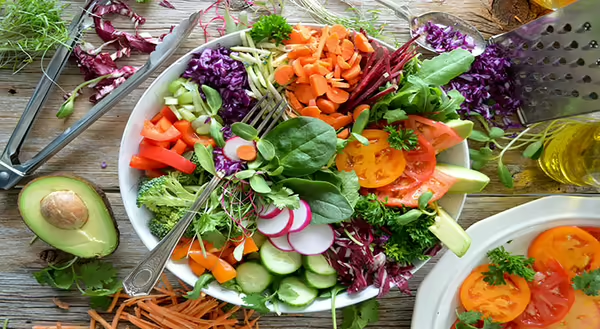
As New Year’s resolutions start to fade and the approach of summer suddenly comes into view, it is easy to get discouraged with trying to eat healthier. Instead of throwing in the towel, how about throwing on the broccoli? Why not try embracing a plant-based diet to add some spring to your step? In this case the word “diet” is not meant as a short-term approach to weight loss, but rather a permanent way of eating that is embraced as a lifestyle change. Plant-based eating means eating a diet that is based on plants. So, while plants may not be the only component of the diet, they should be the main one.
Why embrace plant-based eating? Plant-based diets support immune health, reduce inflammation, help maintain a healthy weight, and reduce the risk of chronic diseases such as heart disease, diabetes, and cancer. Plant-based eating is also associated with less burden on the environment and greater sustainability.
If you would like to make the leap to a plant-based diet, remember that you don’t have to do it all at once. Anything that increases plants in your diet is helpful. Plant foods include fruits, vegetables, nuts, seeds, beans, and grains. Here are five ideas to get started with plant-based eating:
- Start with What You Like. If you love pizza, instead of pepperoni, try ordering a spinach pizza next time. Or, if you love sausage, and you can’t imagine your pizza without it, get the sausage but also try adding vegetables such as mushrooms, onions, or green pepper.
- Add in to Crowd Out. Plant-based foods are high in fiber, which helps us feel full. As you add more plants to your food, you’ll notice you won’t be as hungry for less healthy choices like candy or sweets. Try adding canned beans to dishes that you already eat, like soups, casseroles, or pasta. You can also add chopped vegetables to scrambled eggs or omelets, sandwiches, or soups or pasta as well.
- Try a Green Smoothie. Green smoothies can be a delicious and nutritious way to increase your vegetables. If you don’t love eating leafy vegetables on their own, try making your favorite fruit smoothie and adding a handful of spinach. You won’t taste the spinach and you’ll have a significant boost in the nutrition of your smoothie!
- Play with Protein. Getting adequate protein on a plant-based diet is easy. Plant-based protein sources are lower in calories and contain much less saturated fat than animal sources. Experiment with plant-based burgers and try tofu, tempeh, lentils, or beans in dishes where you’d usually use meat.
- Go Global. Many international cuisines naturally feature a variety of plant-based dishes. Shake up your take-out or restaurant routine and try plant-based dishes at an Indian, Ethiopian, or Middle Eastern restaurant.
About the Author: Leilah Siegel is an Illinois Extension Community Health Educator serving Cook County. Her interests include translating relevant research-based health information into engaging and accessible programs for the community. She develops, delivers, and evaluates health and wellness programming focused on mental health, nutrition, and nature-based chronic disease prevention and provides training and leadership in these areas. She is a passionate believer in the power of health information and equity to empower individuals and communities. You can reach Leilah at lmcnabb@illinois.edu or at (708) 449-4320.